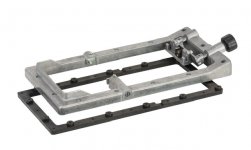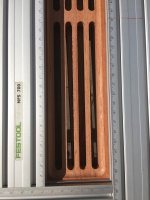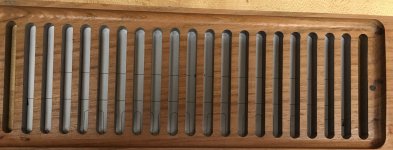simnick
Member
I've been building some horizontally laminated plywood furniture with finger joints made out of individual boards, like the below
View attachment 1
Getting perfect joints here was very difficult, and there was lots to clean up. I used my crappy Ryobi 18v belt sander to rapidly flatten the joints. However, it a) burned through many batteries b) dug in several times and messed stuff up. My Festool and Mirka ROS took forever.
I wanted to get a corded sander with a sanding frame, but Festool's is NAINA, and everything else seems to be discontinued. The Triton seems to be the only model sold in the US with sanding frame, except apparently I discovered they redesigned it in 2020 and now it no longer has holes for the sanding frame. The only thing I can find is the Makita 9404, with a sanding shoe you have to import from UK at $85.
I feel like the universe is trying to tell me that sanding frames and belt sanders period are just not a thing anymore.
Is the Rotex or Bosch GET75-6N good enough here? How likely is it to dig in like a belt sander without a sanding frame? How much slower will it be?
View attachment 1
Getting perfect joints here was very difficult, and there was lots to clean up. I used my crappy Ryobi 18v belt sander to rapidly flatten the joints. However, it a) burned through many batteries b) dug in several times and messed stuff up. My Festool and Mirka ROS took forever.
I wanted to get a corded sander with a sanding frame, but Festool's is NAINA, and everything else seems to be discontinued. The Triton seems to be the only model sold in the US with sanding frame, except apparently I discovered they redesigned it in 2020 and now it no longer has holes for the sanding frame. The only thing I can find is the Makita 9404, with a sanding shoe you have to import from UK at $85.
I feel like the universe is trying to tell me that sanding frames and belt sanders period are just not a thing anymore.
Is the Rotex or Bosch GET75-6N good enough here? How likely is it to dig in like a belt sander without a sanding frame? How much slower will it be?




